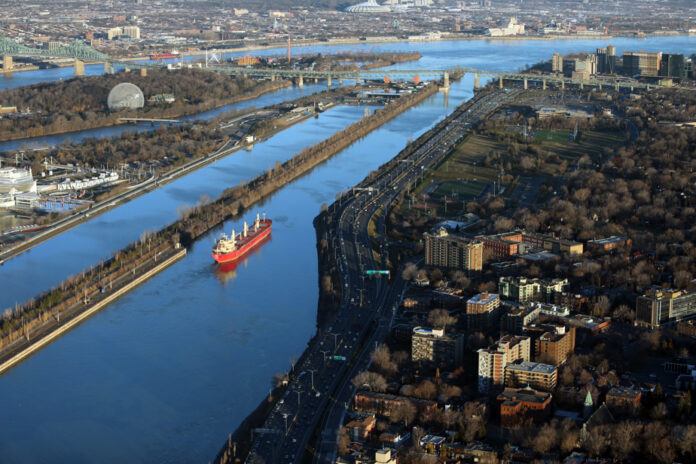The blockage of the St. Lawrence Seaway has feet stamped in the United States, where ports on the American portion of the Great Lakes are strongly criticizing the Trudeau government for its slowness in bringing the employer and Unifor back to the negotiating table. Washington adds its grain of salt and “requests a rapid resolution” of the conflict.
“There is a lot of frustration,” says Steve Fisher, director of the American Great Lakes Ports Association, in a telephone interview. We are outraged that this strike started last Saturday at midnight and that no one has yet gathered. »
The one that represents 16 ports located on the edge of the Great Lakes, such as those of Chicago, Cleveland, Detroit, Green Bay and Milwaukee, is very critical of Ottawa. More than 100 ships cannot access the seaway, according to the American group.
On the fourth day of the strike which paralyzes the corridor linking the lower St. Lawrence River to the Great Lakes, Mr. Fisher said Wednesday that he did not understand why we would have to wait until Friday before negotiations resume. Unifor, which represents some 360 employees of the St. Lawrence Seaway Management Corporation (CGVMSL), and the employer will then find themselves in the company of a federal mediator.
Due to the walkout, 13 of the 15 locks between Montreal and Lake Erie are paralyzed. Even though it is taking place in Canada, this labor conflict has repercussions south of the border, since bulk carriers and lakers cannot use this corridor to access the Great Lakes. Supervisors, engineers as well as maintenance specialists and office workers are walking out.
The hourly wage for all union members is approximately $30 per hour. Remuneration is at the heart of the impasse. According to the union side, the increase proposed by the Corporation is less than 9% over three years.
With approximately two months to go before the Seaway is closed, cargoes of grain, metals, de-icing salt and other goods can no longer move. This time of year is particularly busy since it coincides with harvest season. For example, large shipments are transported to places like the port of Quebec before being exported.
Asked in Ottawa about the walkout, federal Labor Minister Seamus O’Regan was cautious. Unifor and the CGVMSL will meet on Friday because it is the moment chosen by both parties, he said.
“I will consult my mediation team and follow their recommendations,” added the minister, in the corridors of parliament.
The maritime corridor is not only important for Canada. Economic activity in the United States was $34 billion last year, according to a study by Martin Associates earlier this year.
In a sign of impatience on the American side, the President and CEO of the Port of Cleveland, William Friedman, sent a letter to the Secretary of Transportation of the United States, Pete Buttigieg, asking him to put pressure on politicians Canadians. His call seems to have been heard. For the first time since the strike began, Mr. Buttigieg intervened. In a statement sent by email to La Presse, the American elected official said he had spoken with the federal Minister of Transport, Pablo Rodriguez, without offering further details.
“The department requests a rapid resolution [of the conflict] which will restore service on this artery which supports thousands of people in the United States”, it is emphasized.
On October 20, on the social network X, Mr. Buttigieg indicated that his team was assessing the potential consequences of a strike on the Seaway. Asked to say whether the labor conflict could damage Canada’s reputation with its most important trading partner, Mr. O’Regan limited himself to saying that there were exchanges with Washington.
According to a Canadian diplomatic source who is not authorized to speak publicly, the paralysis of the Seaway on Canadian territory is the type of event that risks harming the country’s image in the short term. But since the conflict will eventually be resolved, it should not lead to a deterioration of the Canadian-American trade relationship, she believes.
October 18: Unifor serves strike notice on the St. Lawrence Seaway Management Corporation.
October 22: The Corporation’s approximately 360 union members walk off the job.
October 24: It is announced that both parties will be summoned before a mediator.
October 27: A mediation session is scheduled to take place in Toronto.















